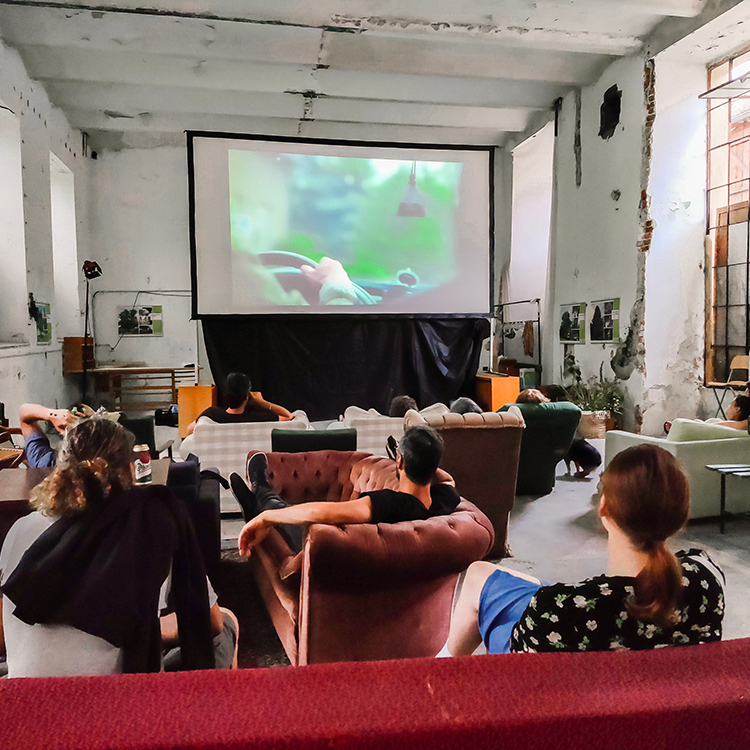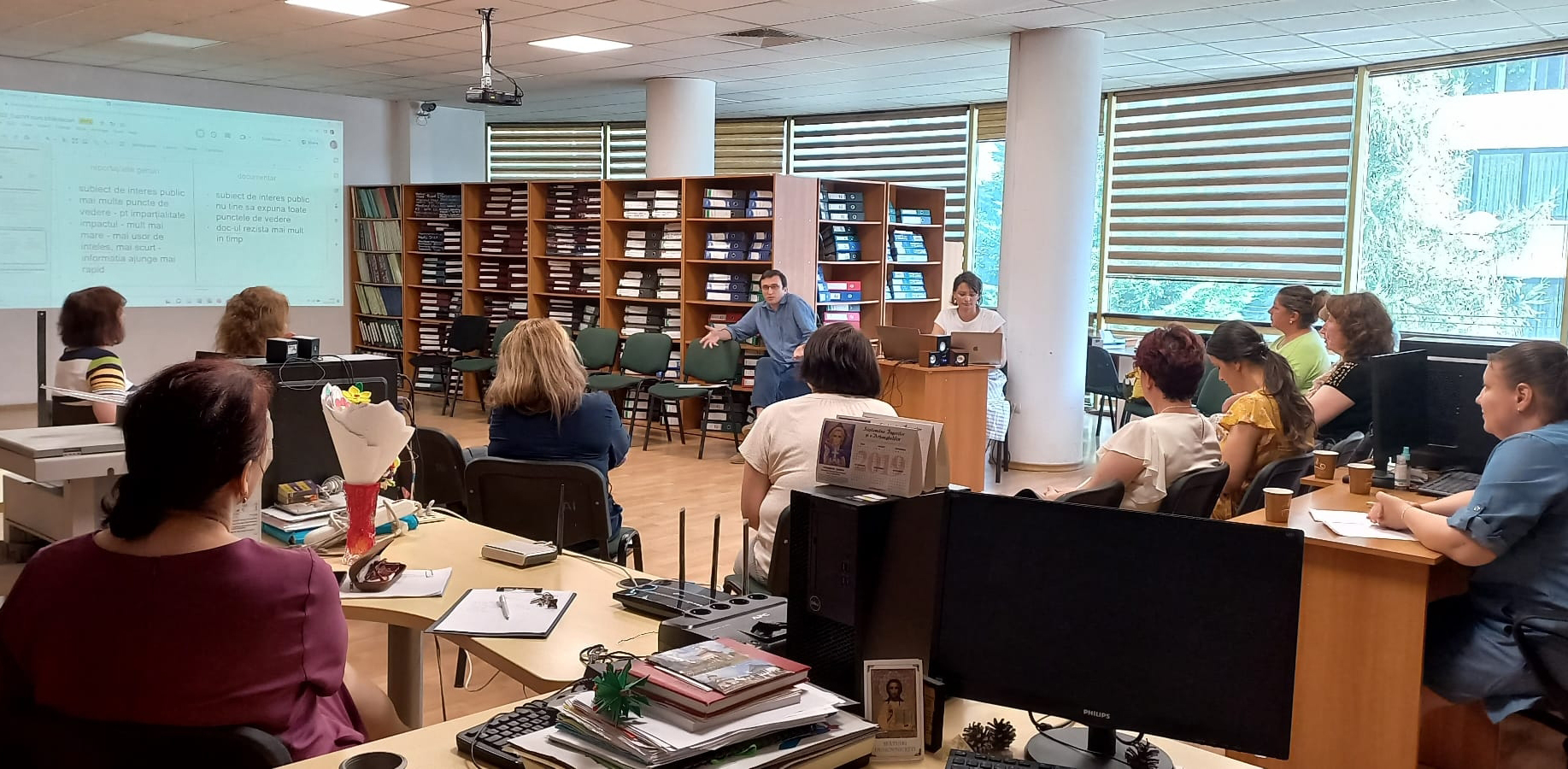
On Diversity of Venues
KineDok’s diversity is reflected in the variety of its venues and locations. You can see KineDok documentary films in six countries, each with its own language and culture. Our venues can be found in eco-communities and industrial cities, in tourist destinations abandoned in the off-season and vibrant capitals, in small depopulated villages with older residents and in university towns. There are no wrong locations. The screen can be set up on a garden fence or in a hall of a modern art museum, in a high school or retirement home, and even in a music festival.
“I never recommend my film club to anyone, as I do my screenings in prison.”

There are different reasons and motivations why people start screening documentary films for the general public. Some organizers focus on popularizing cinematic culture and approach documentary works from their visual artistic value. Others organize documentary film screenings and accompanying events because they want to highlight issues exposed in the films and primarily focus on the content and emotions that documentary films create. Very often, they see documentary films as a starting point for a discussion.

Importance of Being an Organizer
The success of a venue very often depends on the personal qualities and organizational skills of its organizer(s). They ensure that regular screenings run smoothly, communicate with the audience, guests and filmmakers, and curate memorable accompanying events. These organizers (or venue managers, as we call them at KineDok) are passionate individuals who strive to benefit the common good and make a positive impact on their communities. They share a mission of creating community experiences and building community bonds. They do not settle for ready-made mainstream experiences: they have a DIY attitude and a personal touch, so every KineDok venue is different.
“Our biggest motivation is that we live in Orlová; honestly, we partly curate the program for ourselves. We want to enjoy life in our town and we attend our events. I really feel that over the years our communication with the town has become much better; we are taken seriously as an important venue in our town. Sometimes town representatives write nice comments about our events, how interesting they are. That’s great feedback. I believe that there’s still room for improvement. Of course, it’s a structural challenge, so it will take time. It is a really nice place to live, and one day, it will be even better. The change is already underway.”
Blanka

They make their guests feel welcome and respected and create a safe space for diverse opinions to be expressed. They select movies based on their own motivation and interest, as well as the expectations and needs of their audiences, and they design each event with care and attention. KineDok screening venues differ significantly in their target audiences, local possibilities, and approach to the use documentary films. However, they all share one common aspect: an individual or a team that organizes the screenings.
Anyone can start to screen documentary films. Here is a variety of the most typical venues that screen KineDok films:

Community centers are an ideal complement to documentary film clubs. As gathering spaces continue to sprout in various neighborhoods, they aim to bridge the modern-day gap left by the decline of traditional communal activities. Many of these centers exude the refreshing spirit of the DIY attitude, boasting enthusiastic and seasoned staff who cater to diverse age groups within the community. These centers foster genuine personal connections with the locals and offer a wide array of activities. Trust is the cornerstone of their events.
“In our town, organizers are seeking different and new venues similar to ours. Our Prádelna venue can accommodate up to 100 people. Our advantage is that apart from being a cultural center, we are also a community center for people from our town. So we built a community space for locals.”
“Hrubínka Cultural and Sports Center is located in the middle of a housing complex, a green oasis amidst blocks of flats. It consists of an office and a big garden where we organize lots of activities for kids. Throughout the year, we hold events, workshops, summer camps, and holiday-themed functions. We want to create a vibrant environment. There is a retirement home nearby, so we try to create activities which the older citizens could join or just have a coffee, and it works very well. They like visiting our space. And I would like to motivate all these people to come and watch the documentary films we screen.”
Ivana

Cultural centers are well-organized institutions that have considerable experience in hosting various cultural events. They boast a solid and diverse audience base spanning all age groups. However, their busy schedules and efficient organizational backgrounds can sometimes work against them. The personal touch, which is paramount for film clubs, may take a backseat in these centers. Viewers often perceive their events as akin to those held in cinemas and theaters: they attend the screening and leave right after. On the upside, cultural centers benefit from their solid infrastructure, allowing them to provide a cinema-like experience.
“We want to enrich the cultural life in Opava. We have a cinema with 55 seats, and we screen all films there. KUPE is a culture & art space with an art gallery, a cinema, and a café. Our program also includes a variety of music events, concerts, stand-ups, etc. All this is happening in a space, which used to be a water tower with three floors now repurposed into this cultural space, which has been in operation for six years.”
Terezie

Museums and art galleries serve not only as aesthetic institutions but also as social and educational hubs, with their collections accessible to the public. Screening movies in these “cultural sanctuaries” provides a remarkable opportunity for them to forge connections with diverse and local communities. The shared experience of a documentary screening holds special significance for a substantial number of art gallery visitors. These social gatherings subtly shift the prevailing perception from the traditional notions of ownership and curatorial authority to opening a dialogue among participants. The artistic approach of visual art professionals who present these films offers a unique perspective on the genre of documentaries.
“We are an institution accustomed to events of all kinds, so anything related to visual arts is part of our target. What the documentary medium brings to the table is the opportunity for discussions and the sense of a KineDok community formed over time. Its members know each other and hang around after the movie (don’t leave right after like at other events). The members of the community recognize each other, say hello when they meet in the street or go together to other events.”
Simona

Organizations and NGOs often require mainstream cultural or artistic elements to raise awareness within the broader society or strengthen engagement with their supporters, thereby inspiring their members. Certain films from the annual KineDok catalog can address this need. Consequently, some NGOs regularly host screenings, while others select a single film relevant to their work which they screen during social events they organize. These organizations span various domains, including environmental advocacy, women’s right movements, LGBTQ+ organizations, and social work in diverse fields.

Cafés and other catering facilities often carve out time or space during their bustling hours to accommodate community screenings. This endeavor imbues these establishments with a sense of cultural and social engagement, elevating their reputation. However, film clubs operating within such venues face unique challenges. They must navigate the often-noisy ambiance (including those pesky whistle sounds from café machines), divided audience attention, and the transient presence of bar patrons. To mitigate these hurdles, venue managers wisely opt for audience-friendly film titles that are concise and impactful.
“It means a lot to the venue, because we didn’t have film screenings in the pub’s gallery before. And for us, it is a pleasure to be able to bring documentaries into such a space. We want to bring a bit of cinematic seriousness to the pub atmosphere. This way, in addition to drinking beer, you can also have a focused conversation about movies.”
Boglárka

Schools and universities can utilize documentary screenings to enhance the learning experience in a convenient and practical manner. These screenings can take place either within the classroom or in an adjacent community area. The audience primarily consists of students. Furthermore, it is common in such venues to restrict access to outsiders, preserving the magic within the silent walls of the alma mater. Unfortunately, this often results in a simple reality: if the screening event is not mandatory, it becomes a source of joy only for a few enthusiastic students and teachers, as they lack reinforcement from the broader universe.

Libraries are well-organized community spaces with a skilled workforce, accessible technical facilities provided by the maintaining municipality, and far-reaching marketing platforms (both online and offline). Regular visitors, who seek knowledge and art, frequent these spaces. Therefore, it is evident that libraries should be utilized for cultural events such as film screenings. One of the unique challenges faced by libraries is the size of film subtitles, particularly because their average audience tends to be older. However, libraries also serve as excellent venues for connecting movies with an older audience, who deeply appreciates such cultural offerings.
“We always try to see if there is any relevance between the topic and any local issue in our city. If there is, we try to highlight the local issue and involve those affected thereby or with an insight thereof. If possible, we like to invite filmmakers to help us work with the film experience. The topic can even define the chosen venue to add to the atmosphere of the film.”
Levente

Mobile venues are institutions where organizers regularly select different spots within a certain area for screenings which align with the film’s topic. This approach allows them to continuously engage with new potential audiences and curate unique events in collaboration with the facilities at each chosen spot. Typically, they rely on robust social media platforms to effectively communicate their impromptu arrangements to their dedicated viewers.
“We always pick new and less familiar locations which could provide a new experience. Although we like the fountain, a place where it all started, we are open to new locations that could make us more available to the audience.”

Do-It-Yourself approach is when venue managers do not wait for ready-made things; they create them. KineDok enables them to choose freely from an ever-expanding catalog and run their community cinema in their own autonomous way, adapting it to the varying local possibilities and demands. The DIY attitude is positive; when faced with a problem, it instinctively explores possibilities to find a solution. If someone possesses strong organizational skills, and they aspire to share cultural and artistic experiences, build a community, cultivate a reflective and open-minded audience, or just create a cinema through documentary screenings, they should seek out the aforementioned venues in their neighborhood.

By identifying a place that aligns with their vision, they can organize screenings for a group with whom they feel most comfortable engaging. Furthermore, they should reach out to those cozy spaces, knocking on their doors with enthusiasm and a personal conviction that what they are doing is valuable. Such dedication will undoubtedly lead to a successful endeavor.
“I moved to Brasov seven years ago. Back then nobody was doing documentary screenings, and I felt it was needed. I wrote to all my friends in the field to give me their films to screen; I did it for my own passion, but I saw people stayed for discussions and they were interested in those topics, so I understood they wanted more information from around the world and I continued.”
Laura, Brașov, Romania
Notes and Sources
PHOTOS:
Archive of our screening venue (Café Rouge)
We live the documentary film, be there with us.
Start each month with a fresh dose of information. Subscribe to the newsletter.
I hereby consent to the processing of the personal data.










